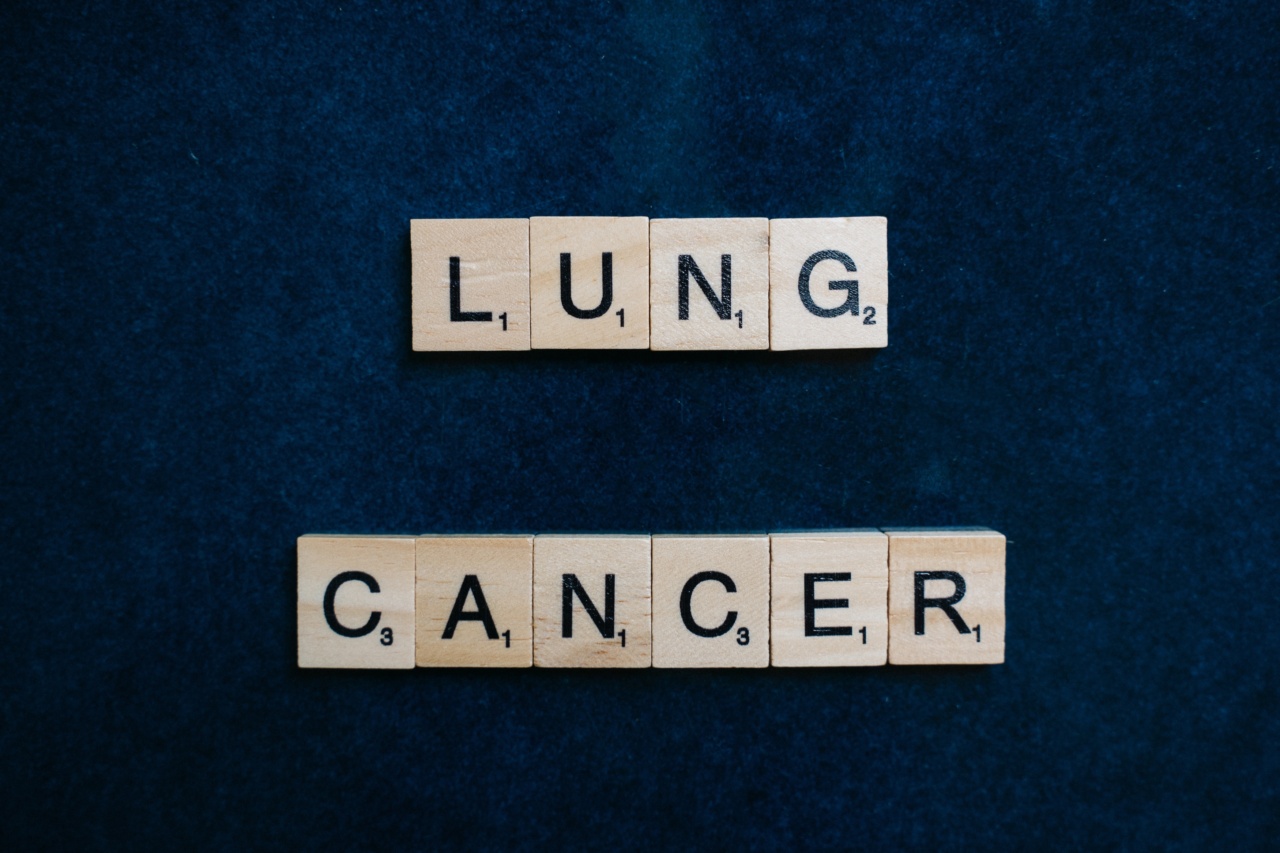Lung cancer is often associated with smoking, but it’s important to note that not all cases of lung cancer are caused by tobacco usage. In fact, a significant number of individuals who develop lung cancer are non-smokers.
Understanding the causes of lung cancer in non-smokers is crucial for prevention, early detection, and ultimately, improving outcomes for affected individuals.
1. Radon Gas
Radon gas is one of the leading causes of lung cancer in non-smokers. This radioactive gas is released from the natural decay of elements like uranium in rocks and soil.
It can seep into buildings through cracks in the foundation and accumulate to dangerous levels. Long-term exposure to radon can significantly increase the risk of lung cancer.
2. Secondhand Smoke
Non-smokers who are regularly exposed to secondhand smoke are also at risk of developing lung cancer. Secondhand smoke contains numerous harmful chemicals and carcinogens that can have long-term detrimental effects on lung health.
Avoiding areas where smoking is allowed and promoting smoke-free environments can help reduce the risk of lung cancer in non-smokers.
3. Indoor Air Pollution
Poor indoor air quality caused by pollutants like asbestos, formaldehyde, and volatile organic compounds (VOCs) can contribute to the development of lung cancer in non-smokers.
These substances can be found in various household products, building materials, and paints. Ensuring proper ventilation and minimizing the use of products containing these pollutants can help reduce the risk.
4. Occupational Exposures
Certain occupations expose individuals to substances that increase the risk of lung cancer.
Exposure to asbestos, silica, diesel exhaust, and other carcinogens in workplaces such as construction, mining, and manufacturing can contribute to the development of lung cancer in non-smokers. Occupational safety measures and proper use of personal protective equipment are essential in reducing these risks.
5. Genetic Factors
In some cases, genetic factors can play a role in the development of lung cancer in non-smokers. Certain genetic mutations may increase susceptibility to lung cancer, even in individuals who have never smoked.
Genetic testing and counseling can help identify individuals at higher risk and inform personalized prevention and screening strategies.
6. Hormonal Factors
Research suggests that hormonal factors may influence the development of lung cancer in non-smokers, particularly among women.
Estrogen receptors in lung tissues and hormonal fluctuations throughout a woman’s lifetime may contribute to lung cancer risk. Hormone replacement therapy and certain contraceptive methods have also been associated with a slightly increased risk of lung cancer.
7. Exposure to Radon in Drinking Water
In addition to radon gas in the environment, some individuals may be exposed to radon through drinking water. Radon can dissolve into underground water sources and contaminate the water supply.
Ingesting radon-contaminated water can potentially contribute to the risk of lung cancer in non-smokers. Regular testing and proper water treatment methods can help mitigate this risk.
8. Chronic Lung Inflammation
Chronic lung inflammation caused by conditions like chronic obstructive pulmonary disease (COPD), tuberculosis, or recurrent lung infections may increase the risk of lung cancer in non-smokers.
Inflammation can lead to DNA damage and alterations, promoting the development of cancerous cells. Early diagnosis and proper management of these underlying lung conditions are essential.
9. Family History of Lung Cancer
A family history of lung cancer can increase the risk of developing the disease, even in non-smokers. Inherited genetic mutations or shared environmental exposures within families can contribute to the increased susceptibility.
Individuals with a family history of lung cancer should be vigilant about potential symptoms and consider regular screening for early detection.
10. Other Risk Factors
Several other factors have been associated with an increased risk of lung cancer in non-smokers.
These include exposure to certain metals (such as arsenic and chromium), air pollution (both outdoor and indoor), certain lung diseases (such as interstitial lung disease), and a history of radiation therapy to the chest area. Understanding these additional risk factors can help identify individuals who may benefit from targeted preventive measures.




























